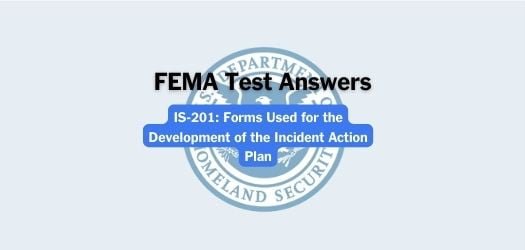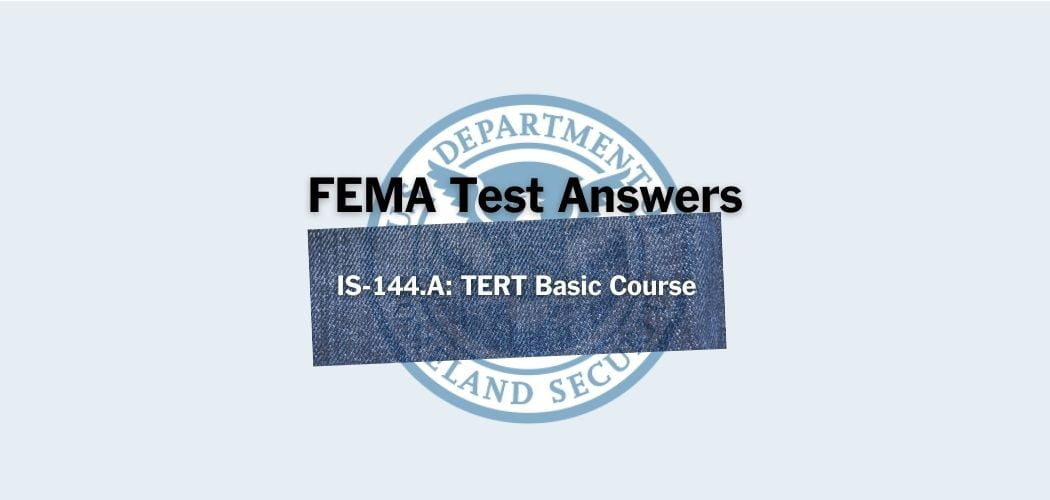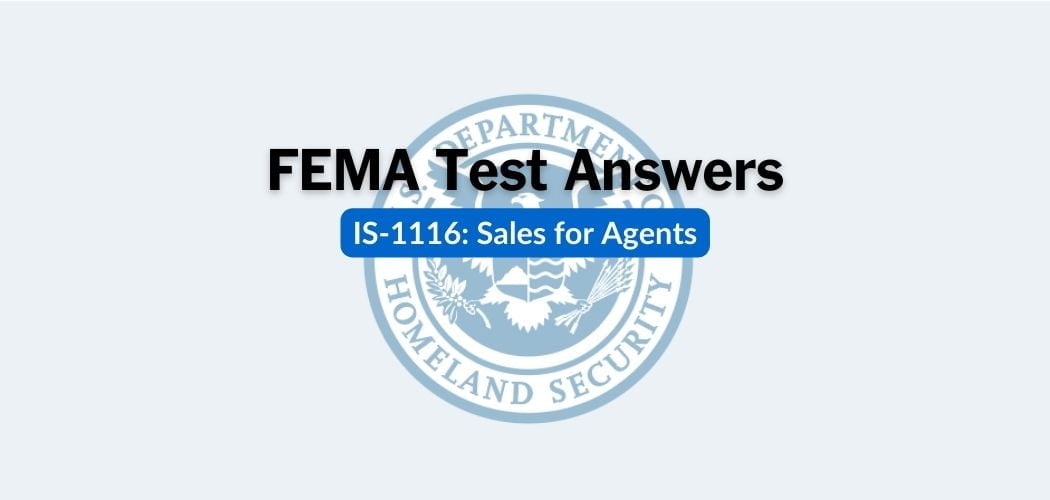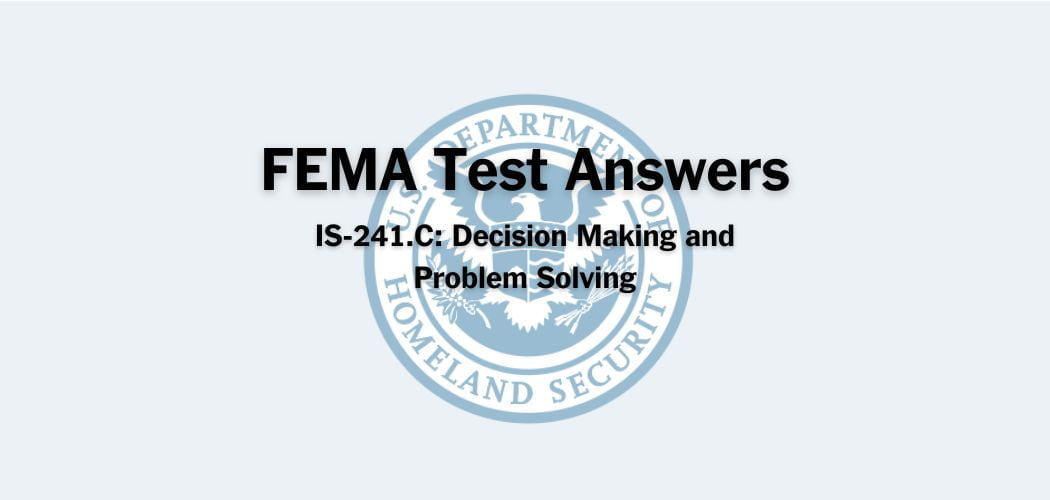Overview: The FEMA IS-706 course was published on 10/31/2013 to provide an introduction to NIMS intrastate mutual aid and assistance.
The IS-706 course explains how to develop mutual aid and assistance agreements and mutual aid operational plans. You will learn about the purpose and benefits of mutual aid and assistance. You will also learn about the emphasis that NIMS places on mutual aid and assistance.
FEMA IS-706 test answers
Each time this test is loaded, you will receive a unique set of questions and answers. The test questions are scrambled to protect the integrity of the exam.
Question 1. Homeland Security Presidential Directive 5 (HSPD-5) established the:
A. Terrorist Screening Center.
B. National Infrastructure Protection Plan.
C. National Incident Management System.✅
D. Critical Infrastructure Sector Partnership.
Question 2. Which of the following is a best practice when drafting mutual aid agreements?
A. Participating jurisdictions should have insurance or another form of protection in place.✅
B. A responder’s license, certificate, or permit should be invalid in the requesting jurisdiction.
C. Agreements should prohibit future supplemental agreements between the parties to the agreement.
D. The period of time covered by the agreement should be indefinite.
Question 3. A month after your mutual aid agreement is activated for an incident, a participating jurisdiction claims that their responders are suffering from health problems and that is your responsibility to pay for their care. Your first step in this situation should be to:
A. Reimburse them.
B. Tell them to file a claim with your insurance company.
C. Check the Demobilization section of your mutual aid operational plan.
D. Check the Insurance and Liability section of your mutual aid agreement.✅
Question 4. Which of the following is an example of intrastate mutual aid?
A. Cook County, Illinois, sends responders to Lake County, Illinois, to respond to a hazardous materials incident.✅
B. Montgomery County, Maryland (a suburb of Washington, DC), sends EMS personnel to respond to a mass casualty incident in Washington, DC.
C. New York City Fire Department sends firefighters to respond to Hurricane Katrina.
D. Paramus Fire Department in New Jersey sends firefighters to help with rescue efforts at the World Trade Center on September 11, 2001.
Question 5. It is essential for the Incident Commander to monitor the status of resources throughout their assignment. If resource needs change, the Incident Commander’s best course of action is to:
A. Reassign the resources.✅
B. Create a new mutual aid operation plan.
C. Revise the mutual aid agreement.
D. Contact the mutual aid working group.
Question 6. What type of assessment helps to determine if your jurisdiction can respond to or adequately deal with incidents identified in the hazard analysis?
A. Capability✅
B. Threat
C. Needs
D. Vulnerability
Question 7. The primary purpose of a mutual aid operational plan is to:
A. Present an action plan in the case that a jurisdiction is unable to provide needed resources.✅
B. Secure funding for needed resources.
C. Provide detailed procedures for implementing a mutual aid agreement.
D. Ensure continuity of operations.
Question 8. Mutual aid working group is responsible for the following tasks EXCEPT for:
A. Authorizing the agreement on behalf of their respective organizations.
B. Reviewing after-action reports from mutual aid events.
C. Maintaining documents such as the mutual aid agreement and the operational plan.
D. Reimbursing the participating jurisdictions for their time and resources.✅
Question 9. The “Severability” section of a mutual aid agreement addresses:
A. The extent of the damage that the mutual aid agreement will cover.
B. The steps the authorizing representative must take to initiate the mutual aid agreement.
C. The terms under which signatories can leave the agreement while leaving the rest of the document intact for the remaining participants.✅
D. The triggers for initiating the reimbursement provision of the agreement.
Question 10. A mutual aid working group typically includes the following individuals:
A. Legal experts.
B. Communication specialists.
C. Residents of the participating jurisdictions.✅
D. Support staff.
Question 11. County A received equipment that was of a lesser capacity than requested from County B (their mutual aid partner). What best practice is desired to prevent this from occurring?
A. Prenegotiated reimbursement amounts
B. Computerized dispatch
C. Resource typing✅
D. Regional mobilization centers
Question 12. Which of the following phrases best describes the purpose of the National Incident Management System (NIMS)?
A. Enables responders from different jurisdictions to work together to respond to incidents.✅
B. Permits State and local governments to efficiently access Federal disaster relief funds.
C. Is limited to the Federal Government’s response to terrorist events.
D. Encourages a private/public partnership in the response to Incidents of National Significance.
Question 13. Mutual aid operational plans should include information about all of the following EXCEPT for:
A. Mitigation.✅
B. After-action reviews.
C. Requests for assistance.
D. Plan maintenance.
Question 14. Which of the following statements about the “Terms and Conditions” section of a mutual aid agreement is FALSE?
A. The purpose of this section is to specify the duration or the life expectancy of the agreement.✅
B. The section should specify the conditions under which a jurisdiction’s obligation to provide assistance may be limited.
C. The section should clarify how the agreement will be renewed.
D. The section should indicate a beginning and an end date of the agreement.
Question 15. Which of the following statements is FALSE?
A. Mutual aid and assistance agreements help to expand the response resources available to any one jurisdiction.
B. Mutual aid and assistance agreements should be limited to two participating jurisdictions.✅
C. Mutual aid and assistance agreements should be in writing to minimize administrative conflict.
D. Mutual aid and assistance agreements could be used to help with debris removal.
Question 16. Which of the following is a best practice for updating your mutual aid agreement?
A. Conduct a hazard identification and vulnerability assessment.
B. Contract with a local company to conduct a hazard identification and vulnerability assessment.
C. Check with your State or local emergency management association to get current data from hazard identification and vulnerability assessments.✅
D. Conduct interviews with local officials to find out what they think the resource gaps are.
Question 17. The “References and Authorities” section of a mutual aid agreement includes details about:
A. The existing statutes and/or regulations that authorize mutual aid agreements.
B. The authority that the Incident Commander has over the incident.
C. The responsibilities of each participating jurisdiction.✅
D. The Federal agencies that have oversight over the mutual aid agreement.
Question 18. In which section is information about who can activate the mutual aid agreement typically found?
A. Limitations
B. Liability and Insurance
C. Purpose and Scope
D. Roles and Responsibilities✅
Question 19. A participating jurisdiction has made a request for assistance that includes the following information:
A. Reimbursement details for travel to and from the parade
B. Contact information for follow-up questions✅
C. Mobilization guidelines
D. Training procedures for this event
Question 20. Which of the following statements is FALSE?
A. A resource may be reassigned prior to the completion of a mission.
B. The assisting party in a mutual aid agreement can withdraw deployed resources due to unforeseen emergencies.
C. The Incident Commander is responsible for requesting additional resources if needed.
D. Self-dispatch is encouraged in mutual aid systems.✅



